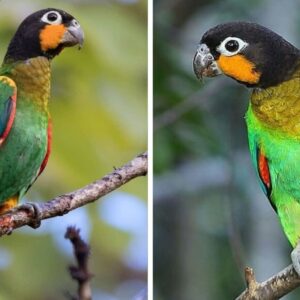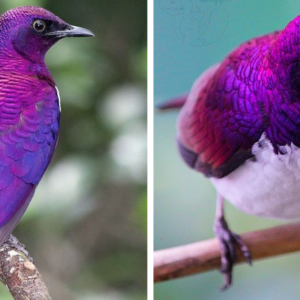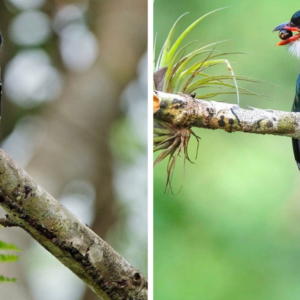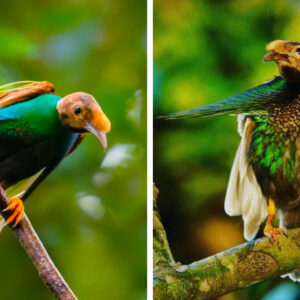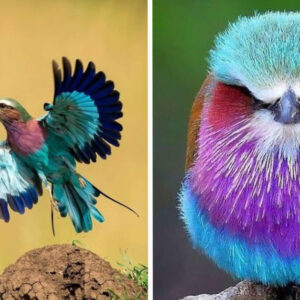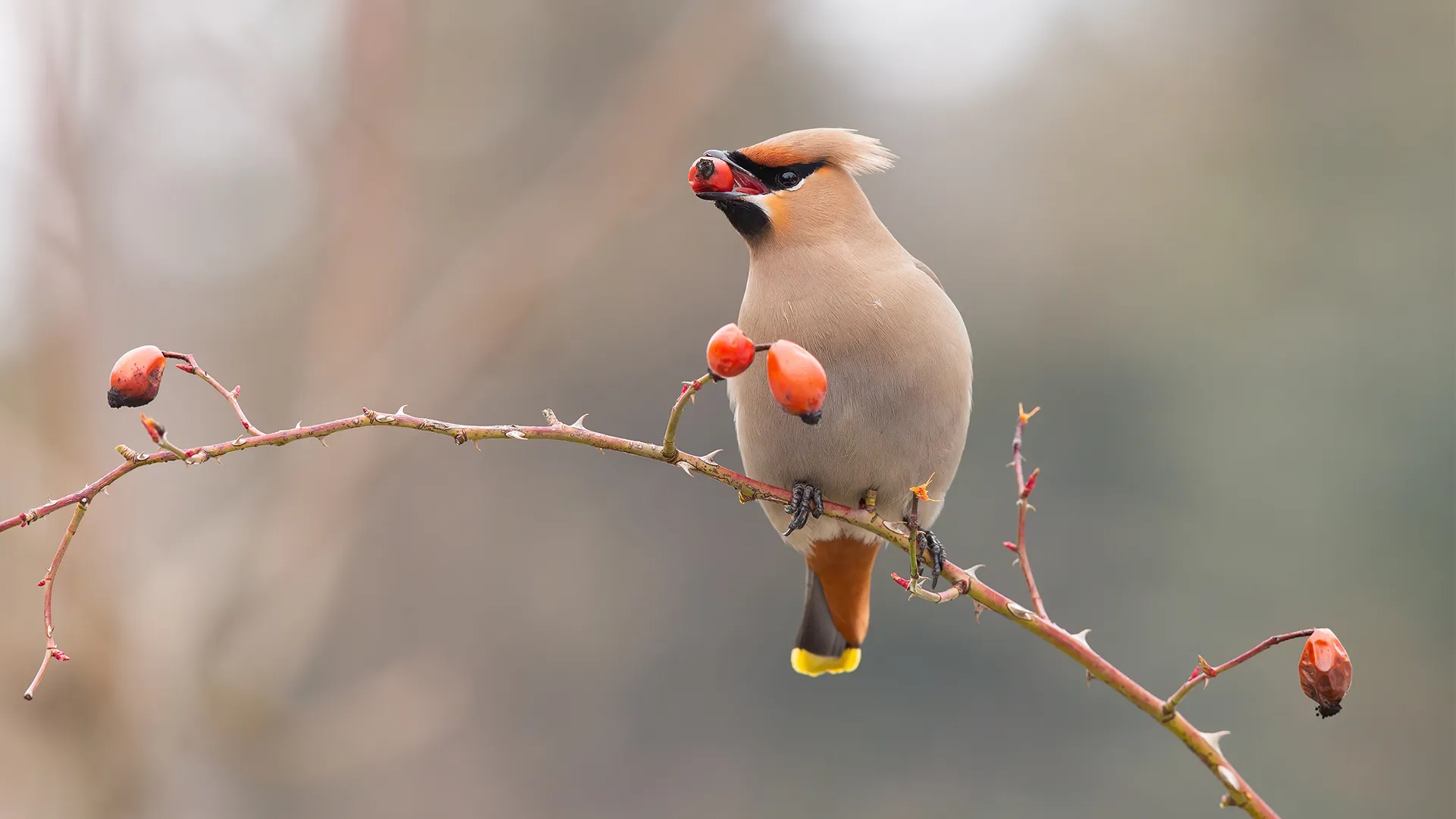
This little, stocky bird is distinguished by a magnificent head-crest and amazing wing patterns.
What kind of creature is a waxwing?
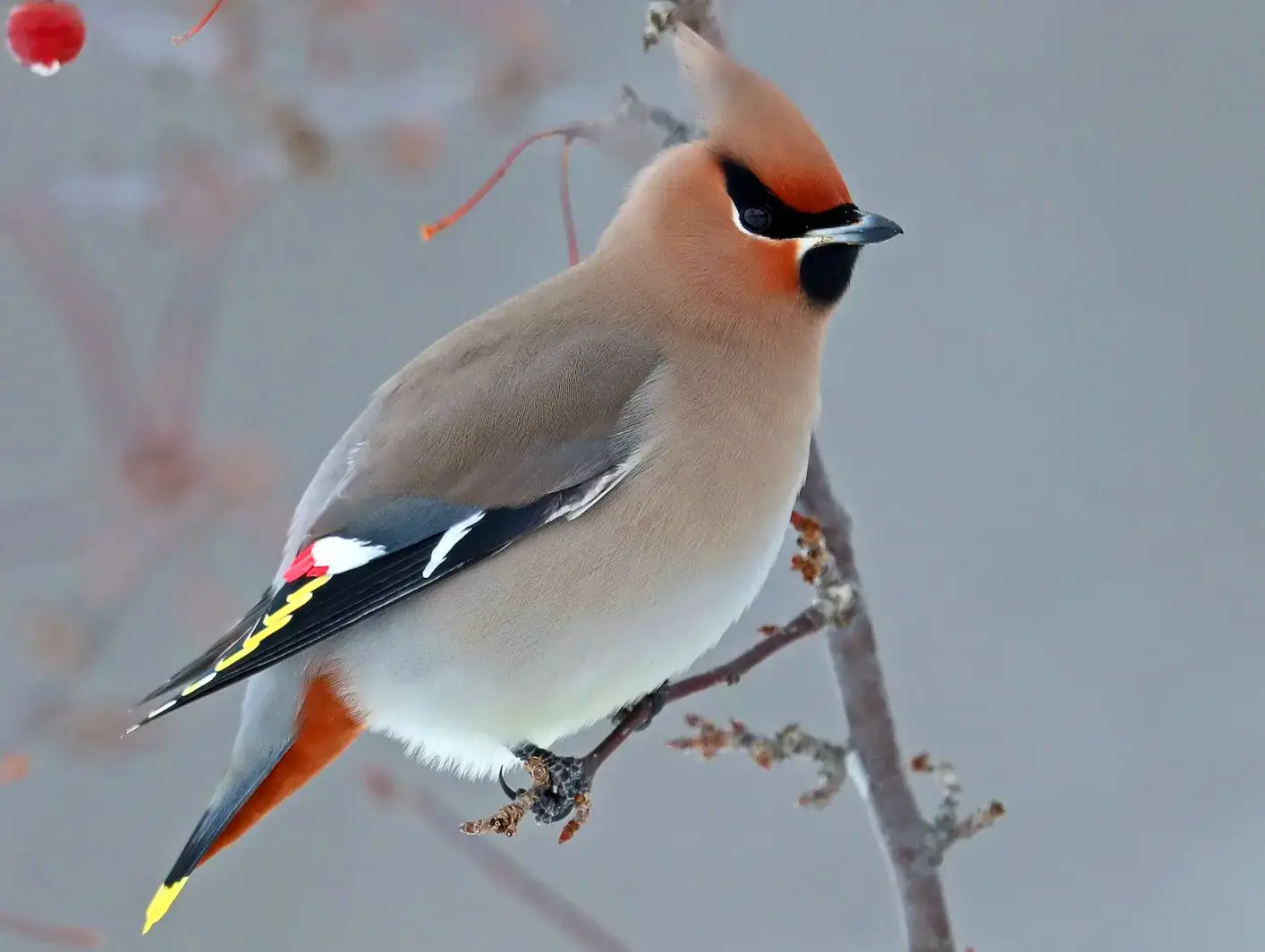
The vivid red tips of their wings, which some claim resemble droplets of molten wax pouring down their feathers, gave waxwings its name. The bird’s huge chestnut head-crest, broad black bib, and mask make it easy to identify. Warm pinkish buff-brown with a grey rump describes the adult plumage. It has a little, blackish tail with a wide, golden tip. Its orange-brown vent contrasts sharply with its golden belly. The waxwing has pointed wings with red waxy appendages on the secondaries and white tips on the primary coverts when they are closed.
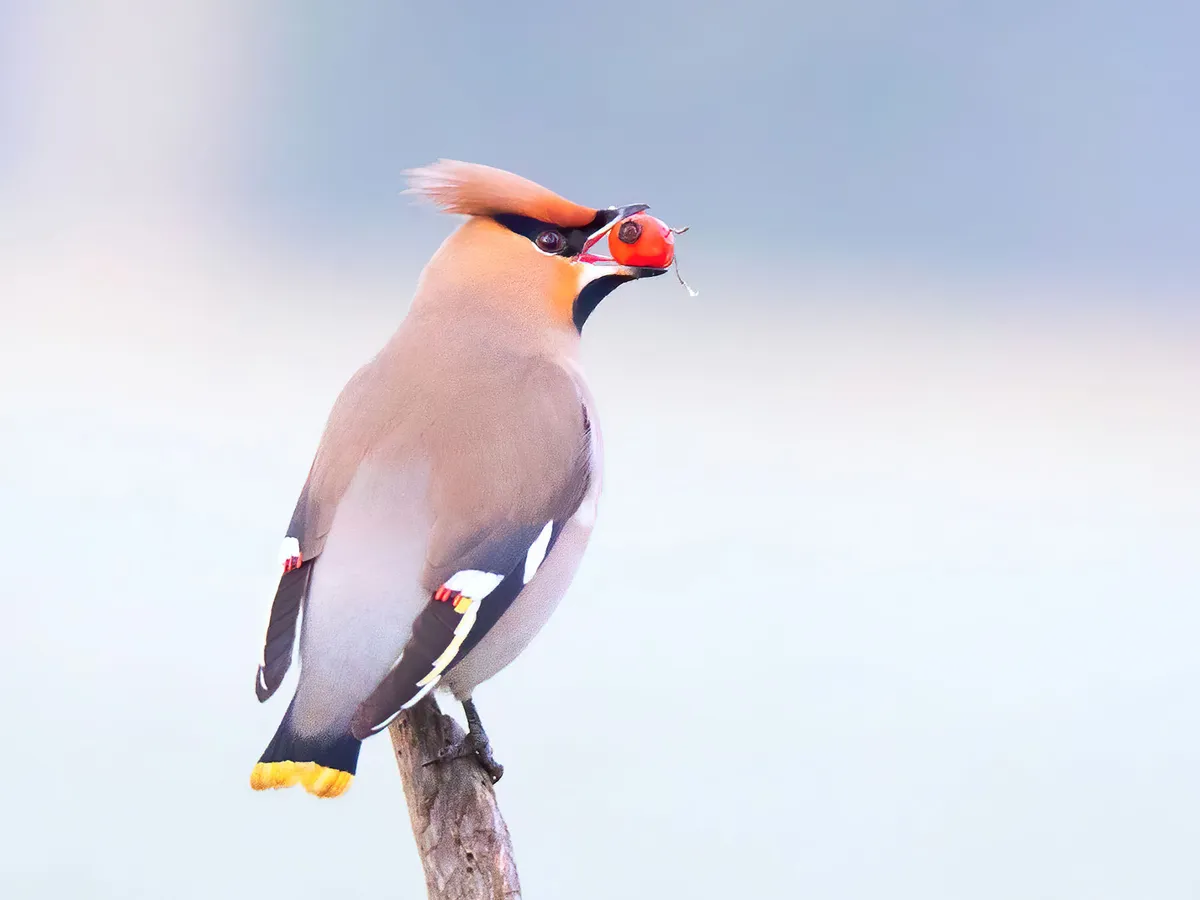
Black on the bill and legs. It is difficult to tell the sexes apart. However, compared to the male, the female often has a less pronounced black bib and less vibrant wing and tail patterns. Young birds have duller feathers than adults, particularly on their wings. They lack the complex coloration and wing ornamentation of the adult.
What kind of sound does a waxwing make?
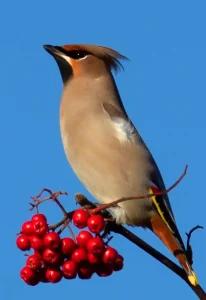
The waxwing sings incoherently, gasping and twittering. A thin, piercing whistle serves as its call.
What food consumes a waxwing?
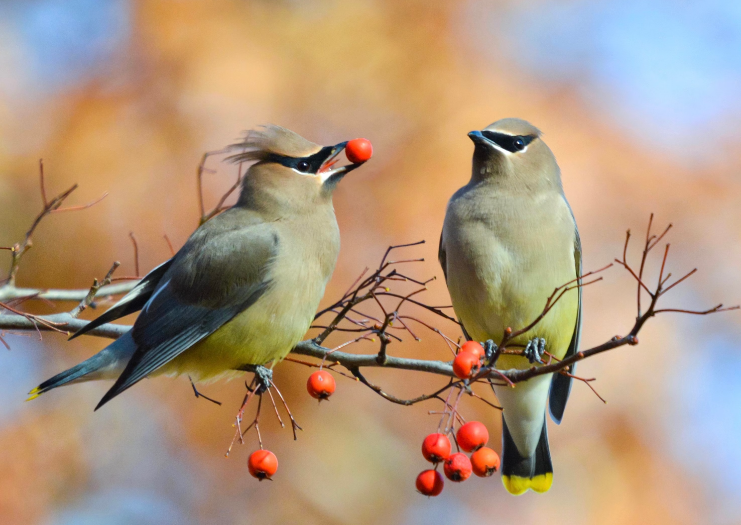
Waxwings are mostly insectivorous throughout the summer, collecting flying insects in sallies from a perch. They will eat fruit in the winter, mainly rowan or hawthorn berries.
Where am I able to view Waxwing?
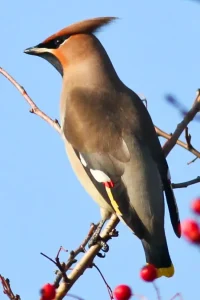
Waxwings prefer coniferous woodlands and forests, and they frequently construct their nests in pine trees. They go to towns and gardens in the winter to feed on berries. The waxwing only travels to the UK during the winter and does not reproduce there. The first immigrants arrive on Britain’s east coast, from Scotland to East Anglia. The birds then begin to move inland gradually.
Tips for recognising signs
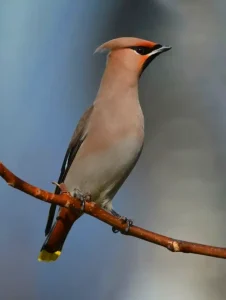
Due of their similar flying profiles, waxwings and starlings can be mistaken for one another in flight. They both fly in swift, jerky motions. Waxwings may be identified by their white wing bars, though. Even when eating, the waxwing often maintains a vigilant and anxious state.
How do waxwings reproduce?
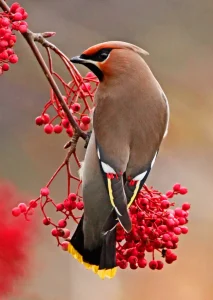
Waxwings prefer nesting locations near water and amid old, stunted conifers during the breeding season. The birds transfer fruit or a tiny inedible object back and forth until one of them consumes it as part of their courting ritual. A cup-shaped nest made by a waxwing is lined with moss and lichen. The female will often be in charge of nest construction while the other adult gathers materials for the nest. The female will lay a clutch of around 5 smooth, glossy, pale bluish-grey eggs with black spots on them. The eggs will spend 13–14 days in the egg chamber. While the male gives her food, the female will incubate the eggs. The two will then divide up the parenting responsibilities.It takes a fledgling 15–17 days to mature. Each year, they will raise one brood.
How long is the lifespan of a waxwing?
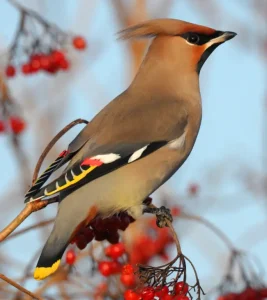
A waxwing has a lifetime of around 5 years on average.
Do waxwings move around?

Waxwings wander around outside of the mating season rather of making great distance migrations. In the winter, waxwings migrate from northern Europe to Britain, where they typically arrive in October and stay until April.
dangers and protection

The waxwing has a Green conservation status in the UK. 10,000 birds winter in the United Kingdom.
https://levanews.com
